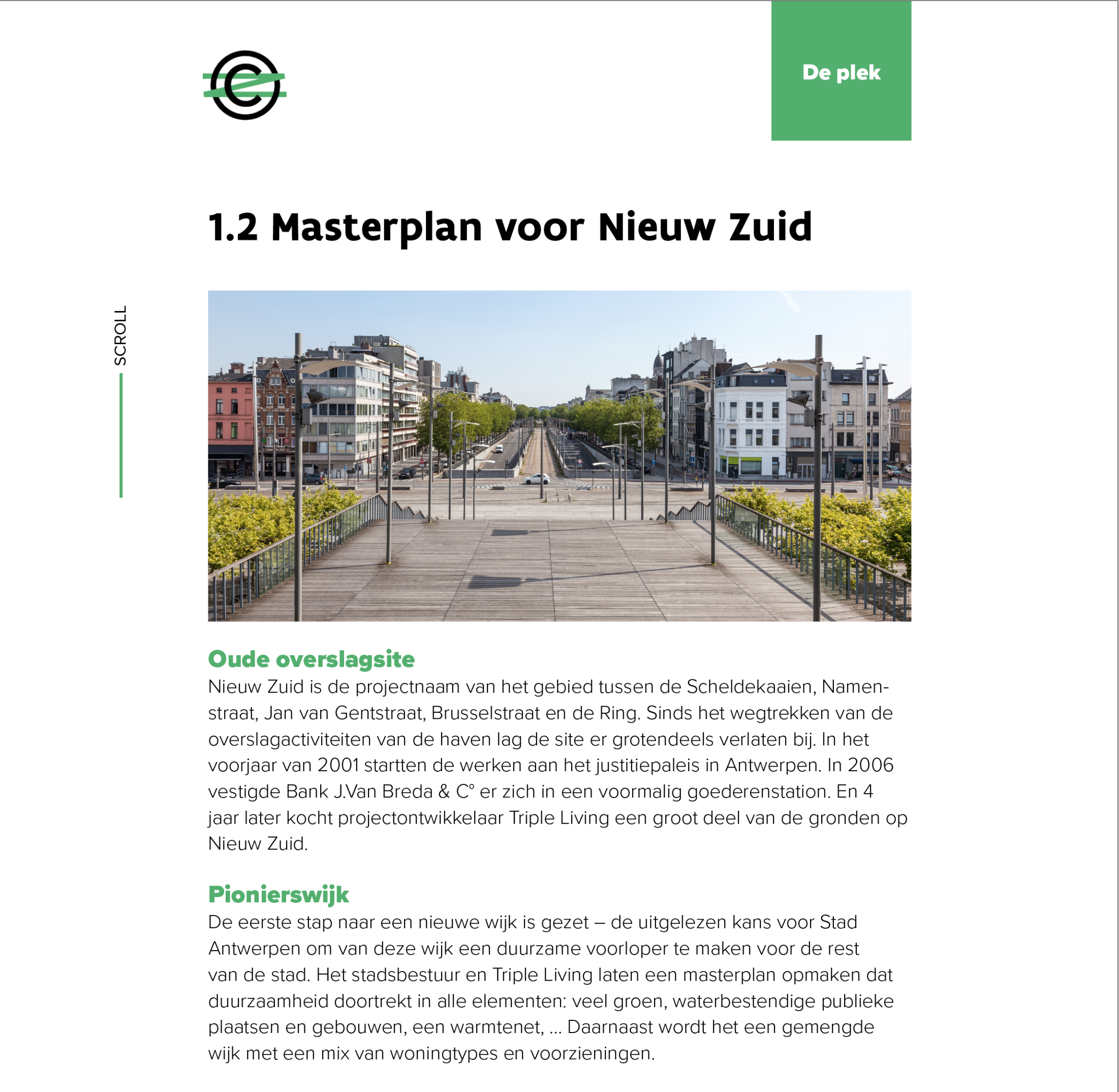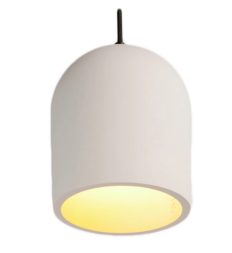

SCROLL

Goals?
10% less use of tap water
25% less waste
10% reduction in the use of electricity and 25% lower peak loads
5 kg of materials per resident per year to be kept in the closed loop.
How?
Via online and offline campaigns, collection of data via smart meters in each household, monitoring use via the app, installing solar panels, setting up a neighbourhood energy group and a circular hotspot.
Responsible partners?
All partners

Circular living means less buying and more sharing, repairing and reusing. For three and a half years, De Kringwinkel worked with the residents and partners of Circular South on a concept for circuit, a circular community experience centre in New South. This hotspot on circular living, officially opened its doors on the 19th of June 2021.
As well as this, the residents succeeded in keeping 7 kg of extra materials (including electronic devices, bicycles, clothing, etc.) per resident, per year, in the closed loop. How was this measured? De Kringwinkel assigned a weight to every piece of material people brought in.
© JEF CLAES
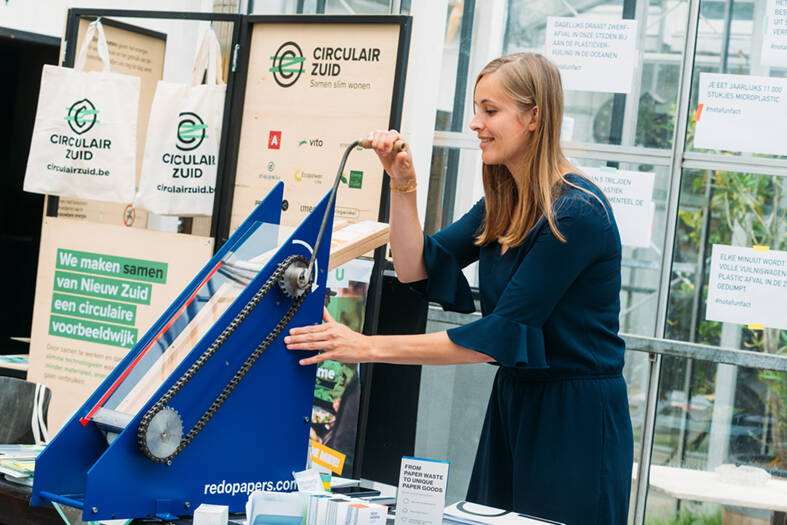
© CIRCUIT
© ELISABETH VAN LENT
In March 2020, during the first lockdown, all live activities came to a stop.
It became difficult to experiment with services and activities.We noticed that after moving, new residents were less involved with the community aspect and had more practical things on their minds. Besides this, there were residents who wanted to get to know their neighbours, but who were not particularly interested in the project itself. Circuit was promoted as an open house for the community, a place where people could chat with one another and relax. But the successes we hoped for never came.
Circular streams
The results

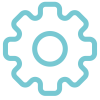

Support from circular businesses
Palazzo Verde—the new location for circuit in New South—also offered circular entrepreneurs a place. De Kringwinkel rented units among others: a hairdresser, an organic florist, a bicycle repair shop, a circular concept store, a packaging-free store and a fair-trade coffee bar.
The more circular products we purchase, the more products will meet circularity standards and processes. But which products are circular? Circuit created
a catalogue and let residents sign up for group purchases, with 263 in the first,
and 236 registrations in the second year. Included in the range: earrings from
recycled ash wood, cutting boards from previous city trees and glasses made from empty wine bottles.
Evaluation
De Kringwinkel aimed for circuit to become a successful circular community centre, a hotspot for circularity. The challenge? Finding out and testing what circuit was to offer in order to become so.
They experimented with:
Miscellaneous activities:
Collaboration with circular start-ups;
GesprekSTOF – creative textile and chat evenings.
Weekly repair services for bikes, clothing and electronics;
A tool-and-equipment library where residents could rent tools and different devices.
Tours for new residents in the New South neighbourhood
Recruitment of repair buddies and technicians: volunteers who shared their expertise.
Events:
A vintage and design market, in March 2019.
‘Let’s talk dirty’: a plastic-free festival in May 2019.
An inspiration evening focused on energy, in August 2019. It included a ‘cycling route’ on rollers, a workshop on making energy bars and information about sustainable energy production.
Circular Food Festival, in October 2019.
DIY-recuperation workshops
A live Instagram discussion: ‘Going plastic-free’.
An online Circular Fashion Festival.
A ‘circuit’ page on Facebook for making and sharing DIY instruction films.
Two group purchases for sustainable equipment: We as consumers are in the lead: the choices we make as consumers influence producers.
Process

Results
1.1. Resources
From repairs to group purchases and workshops
on circularity
Process

Circular living means less buying and more sharing, repairing and reusing. For three and a half years, De Kring-winkel worked with the residents and partners of Circular South on a concept for circuit, a circular community experience centre in New South.
This hotspot on circular living, officially opened its doors on
the 19th of June 2021.
As well as this, the residents succeeded in keeping 7 kg of extra materials (including electronic devices, bicycles, clothing, etc.) per resident, per year, in the closed loop. How was this measured? De Kringwinkel
assigned a weight to every piece of material people brought in.

Results
© ELISABETH VAN LENT
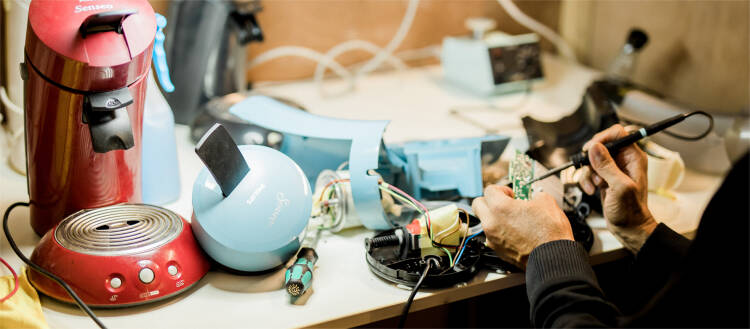
Goals?
10% less use of tap water
25% less waste
10% reduction in the use of electricity and 25% lower peak loads
5 kg of materials per resident per year to be kept in the closed loop.
How?
Via online and offline campaigns, collection of data via smart meters in each household, monitoring use via the app, installing solar panels, setting up a neighbourhood energy group and a circular hotspot.
Responsible partners?
All partners
1.1. Resources
From repairs to group purchases and workshops
on circularity


Evaluation
In March 2020, during the first lockdown, all live activities came to a stop.
It became difficult to experiment with services and activities.We noticed that after moving, new residents were less involved with the community aspect and had more practical things on their minds. Besides this, there were residents who wanted to get to know their neighbours, but who were not particularly interested in the project itself. Circuit was promoted as an open house for the community, a place where people could chat with one another and relax. But the successes we hoped for never came.

Support from circular businesses
Palazzo Verde—the new location for circuit in New South—also offered circular entrepreneurs a place. De Kringwinkel rented units among others: a hairdresser, an organic florist, a bicycle repair shop, a circular concept store, a packaging-free store and a fair-trade coffee bar.
© CIRCUIT
The more circular products we purchase, the more products will meet circularity standards and processes. But which products are circular? Circuit created a catalogue and let residents sign up for group purchases, with 263 in the first, and 236 registrations in the second year. Included in the range: earrings from
recycled ash wood, cutting boards from previous city trees and glasses made from empty wine bottles.
© JEF CLAES
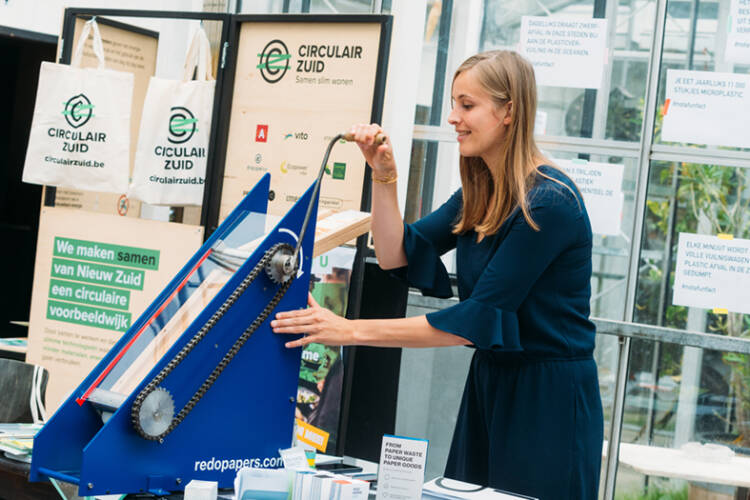
De Kringwinkel aimed for circuit to become a successful circular community centre, a hotspot for circularity. The challenge? Finding out and testing what circuit was to offer in order to become so.
They experimented with:
Miscellaneous activities:
Collaboration with circular start-ups;
GesprekSTOF – creative textile and chat evenings.
Weekly repair services for bikes, clothing and electronics;
A tool-and-equipment library where residents could rent tools and different devices.
Tours for new residents in the New South neighbourhood
Recruitment of repair buddies and technicians: volunteers who shared their expertise.
Events:
A vintage and design market, in March 2019.
‘Let’s talk dirty’: a plastic-free festival in May 2019.
An inspiration evening focused on energy, in August 2019. It included a ‘cycling route’ on rollers, a workshop on making energy bars and information about sustainable energy production.
Circular Food Festival, in October 2019.
DIY-recuperation workshops
A live Instagram discussion: ‘Going plastic-free’.
An online Circular Fashion Festival.
A ‘circuit’ page on Facebook for making and sharing DIY instruction films.
Two group purchases for sustainable equipment: We as consumers are in the lead: the choices we make as consumers influence producers.
The results
